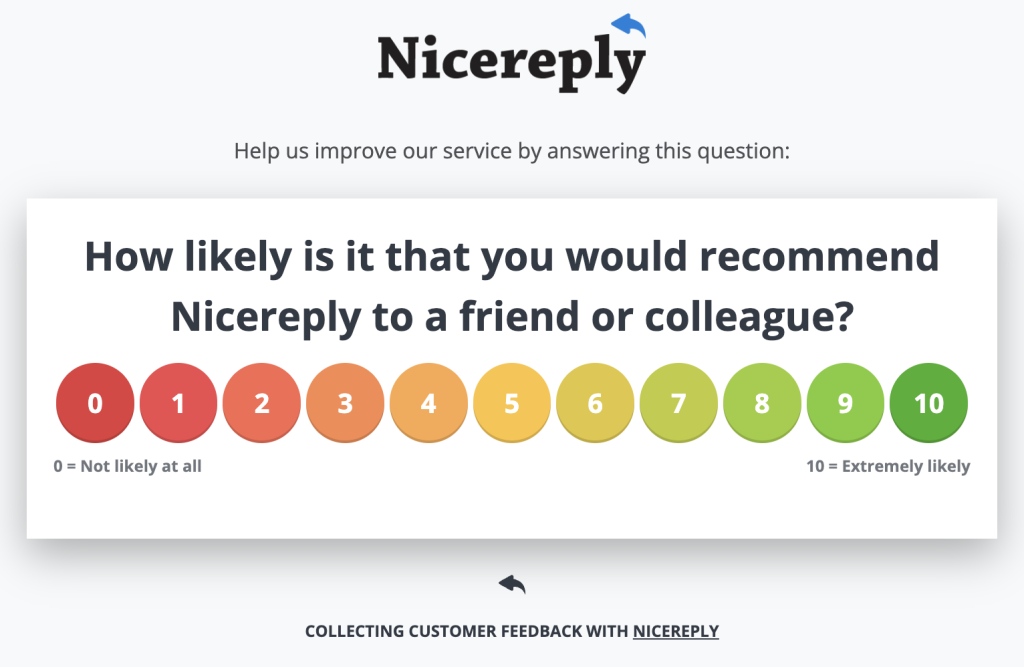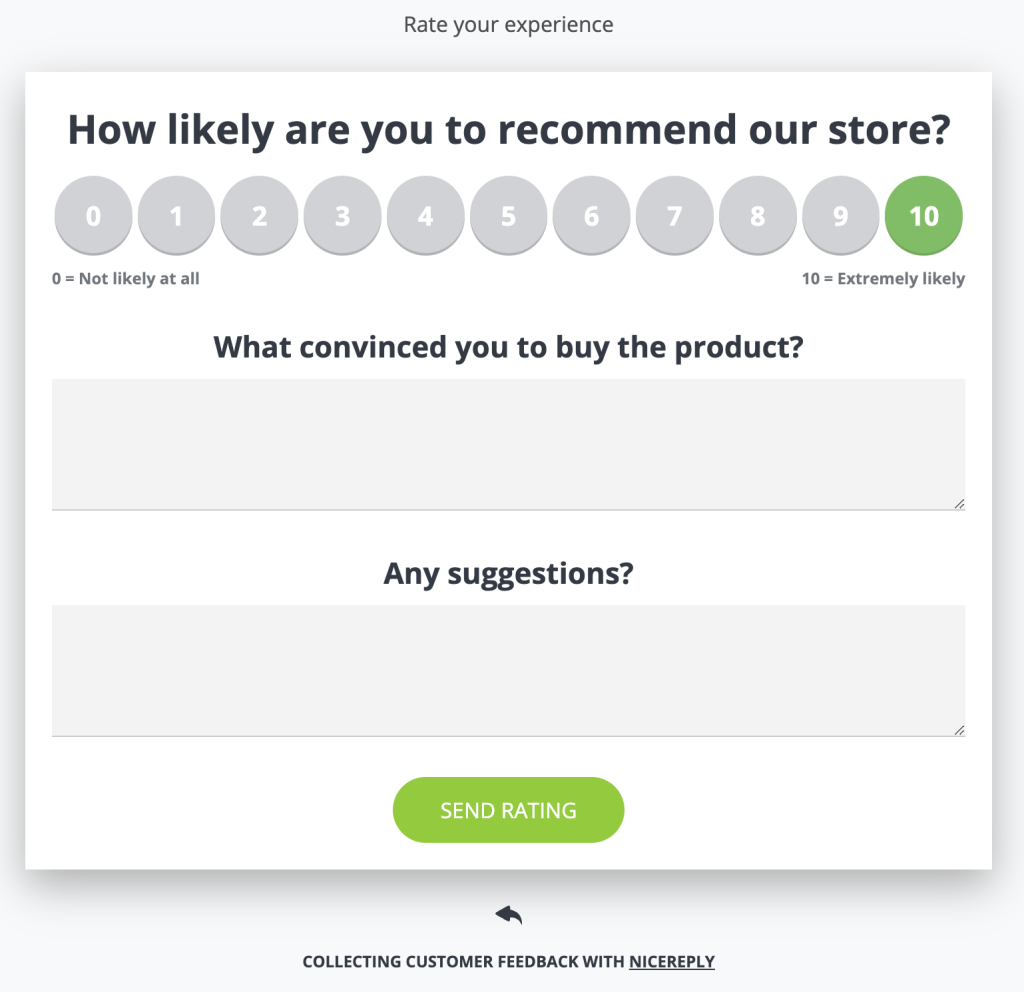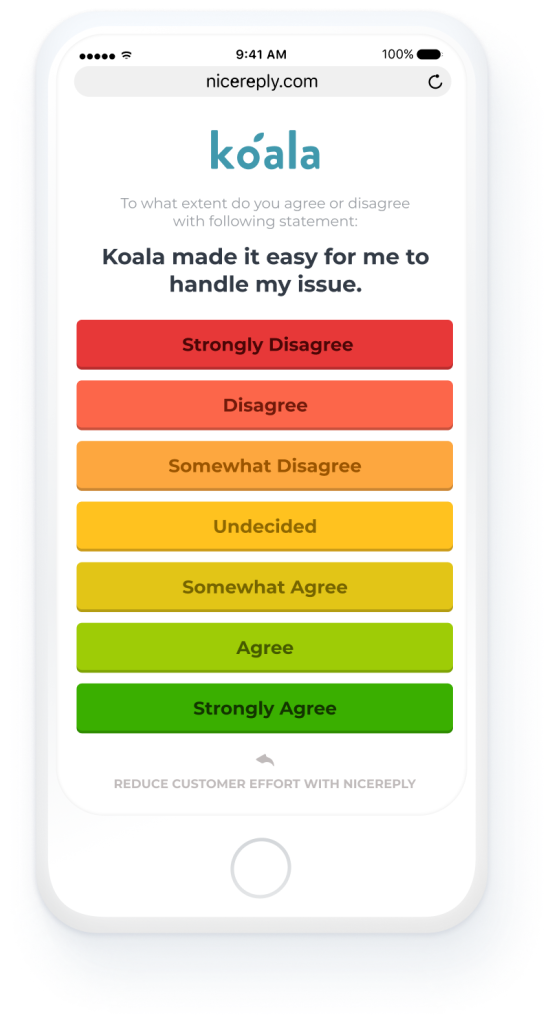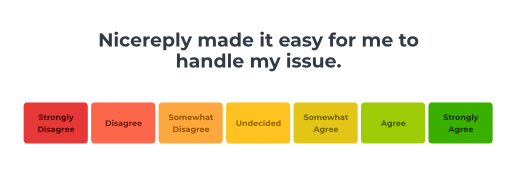What is a feedback survey? Is it simply a strategy used to gauge customer satisfaction, or is it a means of actively involving and engaging your customers?
You may be surprised to learn that it’s both.
A feedback survey is a great way to get valuable information about your customers’ preferences while keeping them engaged with your brand.
If you’re curious about what is feedback example or how to design an effective survey for your business, read on.
In this article, we’ll discuss the definition of a feedback survey in detail, showing the different types of questions you can ask in a feedback survey, with great examples to inspire you.
What Is a Feedback Survey?
A feedback survey is a questionnaire used to collect information about a product or service directly from the customers. It helps you gain insights into a customer’s experience with your brand, measure their level of satisfaction or displeasure, and identify areas of improvement.
Feedback surveys are one of the most effective ways to drive your business forward because they help you find ways to improve customer experience and satisfaction, which is the backbone of every successful business.
You can gather feedback surveys through emails, business text messages, focus groups, customer reviews, social media channels, user interviews, and phone interactions.
Let’s discuss some reasons why a feedback survey is a necessity for every thriving business:
- Improves decision-making: Regularly collecting feedback surveys informs you about the strengths and weaknesses of your business. As a result, you can make informed decisions geared towards the growth of your business.
- Reduces customer churn: Asking customers for feedback, makes them feel heard, which ultimately increases customer retention and loyalty. Asking for customer feedback shows your commitment to improving customer experience as well. This helps build trust and improves customer retention.
Helps with product development: Information obtained from feedback surveys can help you identify your best and least-performing products or services. Based on this data, you can figure out ways to improve the quality of your offerings.
Types of Feedback Surveys
What is feedback? It’s constructive data used to improve or assess performance or behavior.
There are several types of feedback surveys you can use to collect different types of information. Let’s discuss some of them below.
1. Net Promoter Score (NPS) Surveys
A Net Promoter Score survey measures a customer’s satisfaction based on a single question and a numbered scale.
The NPS customer survey metric was first introduced by leading consulting brand Bain and Company in 2003. Ever since then, it has been used by millions of businesses worldwide to measure customer satisfaction.
An NPS survey helps determine the likelihood that a customer would recommend your services to their friends, colleagues, or family. The scale for this survey can range from 0 to 100, 0 to 10, or 0 to 5, with the lowest number expressing displeasure and the highest number expressing satisfaction.
For example, if you decide to use an NPS survey scale that ranges from 0 to 10, 0 will be “definitely will not recommend”, while 10 will be “definitely will recommend”.
Here’s an example.
2. Customer Satisfaction Score (CSAT)
A CSAT survey aims to gain an immediate understanding of how satisfied customers are with your products or services. It can be a simple Yes or No question, or it can be a multiple-choice question.
To gain more accurate feedback, CSAT surveys are usually conducted immediately after a product or service has been rendered. For example, if a customer has just shopped from your store, you can ask them how satisfied they were with the shopping experience. The responses to CSAT surveys are usually preset, so they don’t provide in-depth data. However, you can also provide room for customers to leave recommendations. Here’s an example.
3. Customer Effort Score (CES)
A CES survey gathers information about the user-friendliness of your products and services. What is feedback gained by CES? It measures how much effort a customer puts into interacting with your brand.
For example, you can send a CES survey after a customer has reached out to your customer service team to solve an issue.
Types of Questions to Include in Your Feedback Survey
The type of questions you’ll ask in your feedback survey varies depending on your goals. You can ask close-ended questions, Likert scale questions, and/or open-ended questions.
Let’s discuss the different types of feedback questions below.
1. Likert Scale questions
Founded by psychologist Rensis Likert, a Likert scale question measures how much a customer agrees or disagrees with a statement you present to them.
The answers to this type of survey question tell you more about how your respondents feel about your brand.
Likert scale questions are one of the most popular types of feedback questions. They’re often used for CES surveys. You can use a point scale or emoticons for this type of feedback question.
Here’s an example for you.
2. Close-Ended Questions
These types of survey questions usually provide predefined answers customers can choose from. However, it provides limited insight because the respondents aren’t offered a space to express their opinions.
Due to the nature of close-ended questions, they’re usually used for quantitative data. It could be dichotomous (yes or no), multiple choice, or a rating scale.
Here’s an example of a close-ended question for feedback surveys.
3. Open-Ended Questions
These survey questions are great for qualitative data because they allow respondents to freely express their opinions without being restricted to predefined answers.
With open-ended questions, you can also put a limit on how long their answers can be to avoid unnecessarily lengthy responses.
Here’s an example.
How to Write Good Feedback Survey Questions
While feedback surveys are a great way to gather information, they can easily go wrong. If you ask too many questions or use poor phrasing, you may end up getting inaccurate answers or have a low response rate.
What is feedback in business terms? They help you gain insight into how customers or leads view your brand. The trick to writing good feedback survey questions is to keep them relevant, short, and specific.
Here are some tips to keep in mind.
Keep It Short
Try to keep your questions as concise as possible. Longer questions tend to confuse respondents, making it more difficult to get accurate answers.
Remember that the entire survey should also be as short as possible. Unnecessarily lengthy surveys can lead to survey fatigue. This happens when respondents lose interest along the way and either ditch the survey or provide rushed, inaccurate answers.
Use a Good Survey Tool
The survey platform you use plays a huge role in how effective your feedback surveys will be.
When you’re choosing a survey tool to use, look out for the following features.
- Customization: The tool you use should allow you to create customized feedback surveys using your brand colors, logos, taglines, and other brand assets. This helps to further establish consistent branding with your customers.
- Survey analytics: Your feedback surveys would be pointless if you can’t accurately analyze the responses. Therefore, the survey tool you use should have extensive data analysis features to extract useful insights from the survey results and to give feedback meaning.
- Integration capabilities: Choose a tool that can seamlessly integrate with your website, email service provider, and social media platform. This optimizes the survey process, ensuring that you can easily gather feedback from various touchpoints, including your social media strategy, content, or email marketing.
Question morphing: Your feedback survey tool should let you create whichever question formats best suit the type of survey you’re conducting, whether it’s Likert scales, close-ended questions, and/or open-ended questions. It should also allow you to easily switch from one question format to another as needed.
Ask Relevant Questions
Ask questions that are relevant and specific to the respondent’s experience. This ensures that the data you procure are also relevant and insightful.
Here are some easy ways to ensure your respondents get relevant survey questions.
- Use segmentation: Instead of sending generalized feedback surveys, segment users based on their buying behaviors, use cases, and other relevant factors.
- Ask contextual questions: Ask questions customers can relate to. For example, as customers navigate your website, send a triggered survey popup asking them about their navigation experience.
Use skip logic: Use survey tools that utilize skip logic to help you keep the questions relevant at every point in the survey. This means that respondents will be directed to the next logical question based on how they answer the current questions.
Avoid Biased Language
The way you phrase your feedback survey questions plays a huge role in how the respondents answer them. Use neutral language and avoid leading questions that may influence the respondents’ answers, causing them to give false or inaccurate responses.
For example, this question: “What do you think of our new and convenient mobile app?” is a leading question because it influences the respondent to think the mobile app is convenient, even when they may not necessarily agree with that logic. This could sway them to answer the question positively.
Instead, you should use neutral language. In this example, you can rephrase the feedback survey question to say, “What do you think of our mobile app?”
This prompts the respondents to give their honest opinions, leading to more accurate feedback survey results.
Optimize for Mobile
According to Statista, over 58% of global website traffic is generated from mobile devices. This means that most of your respondents will likely use their mobile phones to complete your feedback surveys.
Therefore, you must optimize the surveys for mobile devices to make it easier for respondents and provide more options to complete them.
You can optimize your feedback surveys for mobile phones by:
- Using images and videos only when necessary. Too many graphics may slow down the page load time.
- Displaying one question per page if possible. Putting too many questions on the same page will appear crowded and can discourage the respondent from proceeding with the survey.
- Carrying out functionality and readability tests to ensure the survey is optimized for mobile devices before deploying it.
Customer Feedback Survey Examples
Let’s look at some examples of feedback surveys you can use for various types of research, including market, product, and customer experience research.
Market Research Survey Question Examples
Questions for a market research survey aim to uncover information on market demand for your products or services. They enable you to know more about your target audience and gather data on their buying habits, preferences, and more.
Some market research feedback survey examples include:
- Have you ever purchased our product before? (Yes/No question)
- How much do you usually spend on this product? (Close-ended multiple choice question)
- How much are you willing to spend on this product? (Close-ended multiple choice question)
- What other product would you use as an alternative to ours? (Open-ended question)
- How often do you use our products and services? (Close-ended multiple choice question)
Product Research Survey Question Examples
Product feedback questions gather information about specific products. They gather data on product quality, pricing, user-friendliness, and more.
Some product research survey questions include:
- On a scale of 1 to 10, how likely are you to recommend our product to your friends and family? (NPS survey with Likert scale question)
- How satisfied are you with the quality of our product? (Likert scale question)
- What are the challenges you experience when using our product? (Open-ended question)
- What do you like most about our product? (Close-ended multiple choice questions)
- What do you like least about our product? (Close-ended multiple choice questions)
- Did the quality of our product meet your expectations? (Yes/No questions)
- What other features would you like to see? (Open-ended question)
Customer Experience Survey Question Examples
These are questions aimed at measuring the quality of your customer’s experience with your brand. They can ask for specific details about purchase transactions, customer service experience, and other aspects of customer engagement.
Here are some examples of customer experience survey questions:
- How difficult was it to complete your online purchase today? (Likert scale question)
- How would you rate your overall experience with our brand? (Likert scale question)
- What do you love or hate most about doing business with us? (Open-ended question)
- How can we serve you better? (Open-ended question)
- How likely are you to recommend our brand to other people? (NPS survey with Likert scale question)
Ready to Use Feedback Surveys Today?
Feedback surveys are some of the most effective ways to gather valuable insights about your brand. You can use information from feedback surveys to create your ideal customer profile, identify areas for improvement, and generally create a better experience for your customers.
Also, by understanding what feedback is in communication, you’ll unlock valuable insights that will ultimately lead to better customer satisfaction and business growth.
Ensure that you select the appropriate survey type and question format to meet your specific objectives and maximize the effectiveness of your feedback surveys.
Finally, remember to keep your feedback surveys concise and relevant while using neutral language to prompt honest responses. Good luck!

















